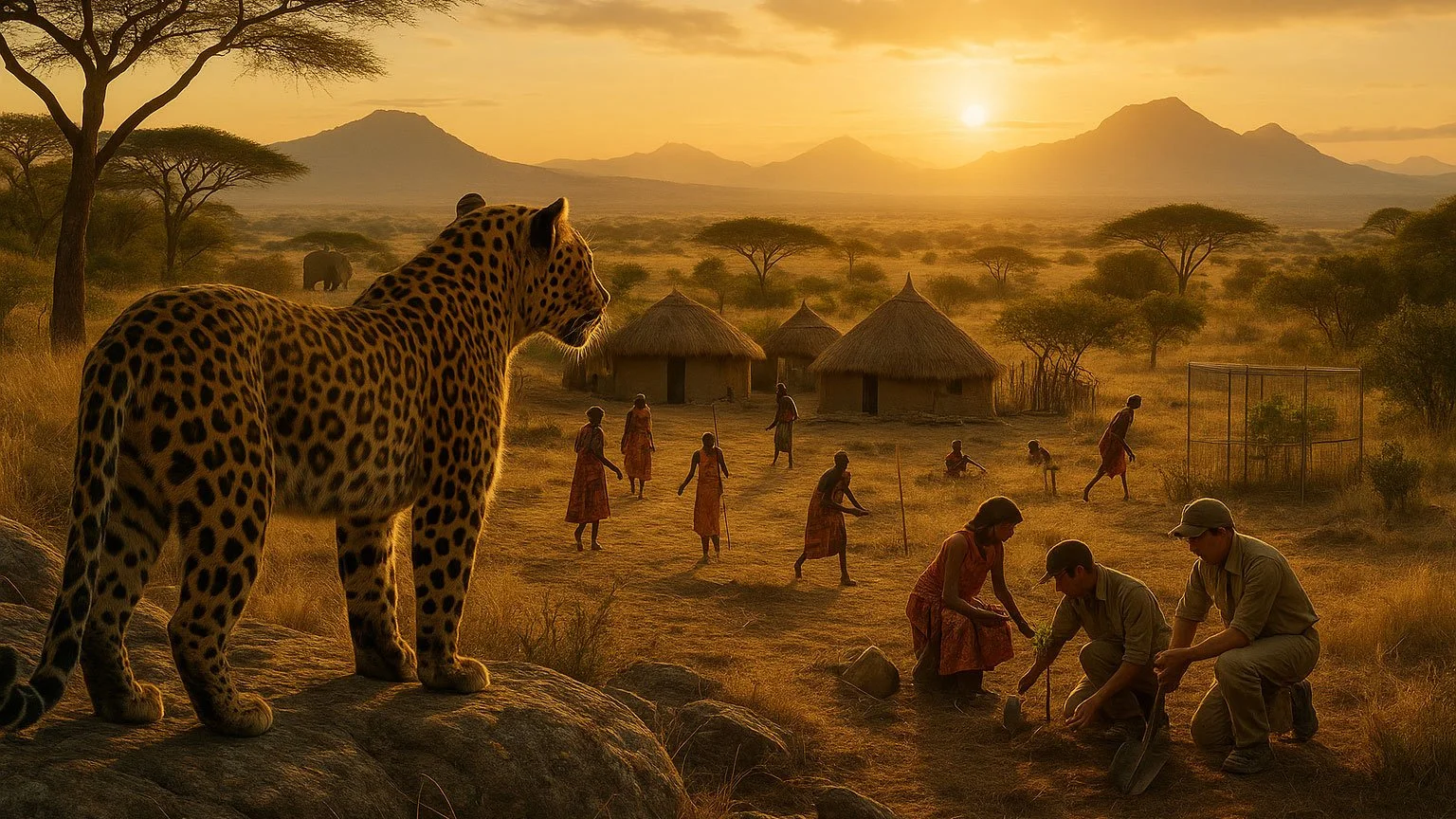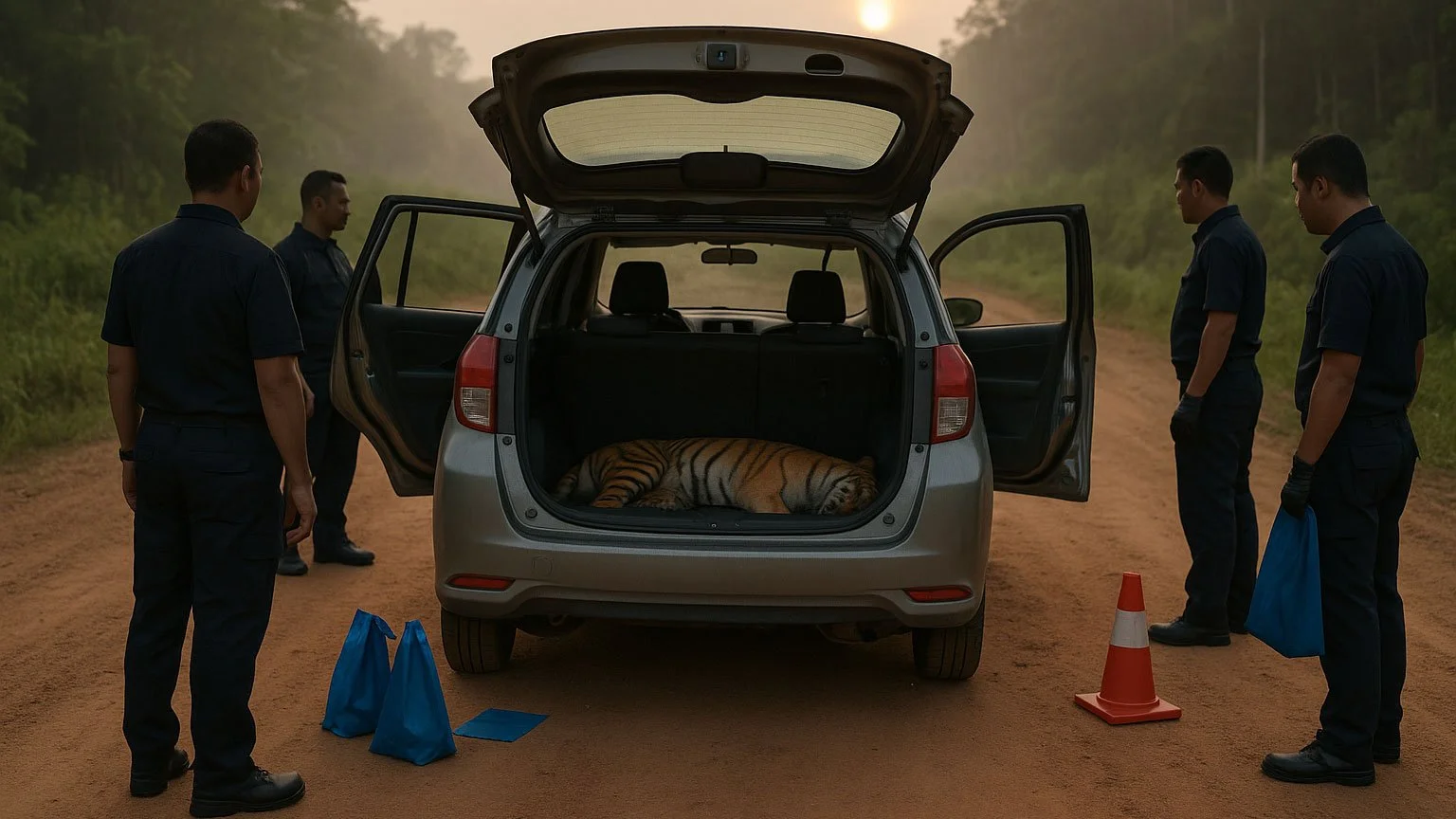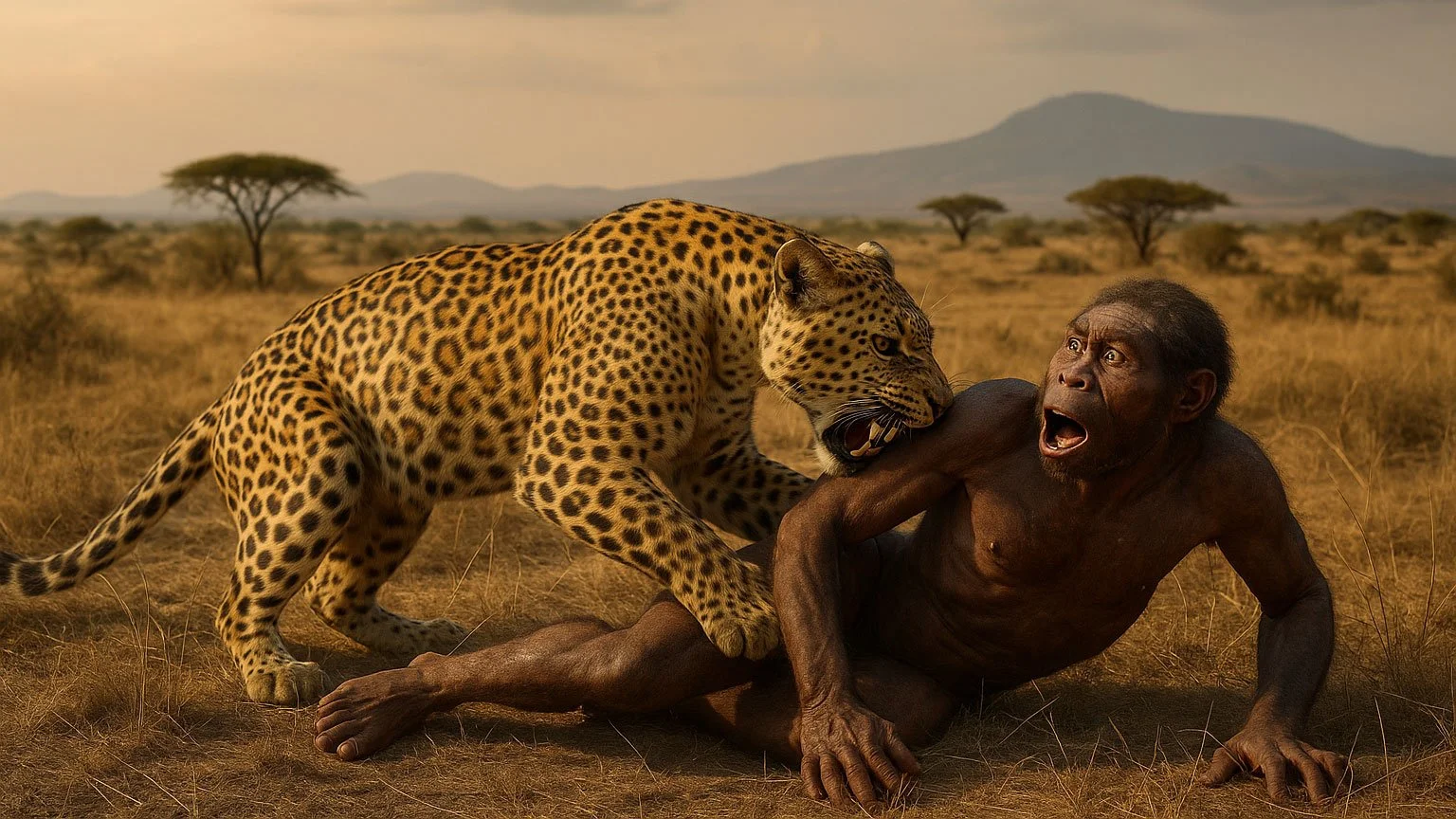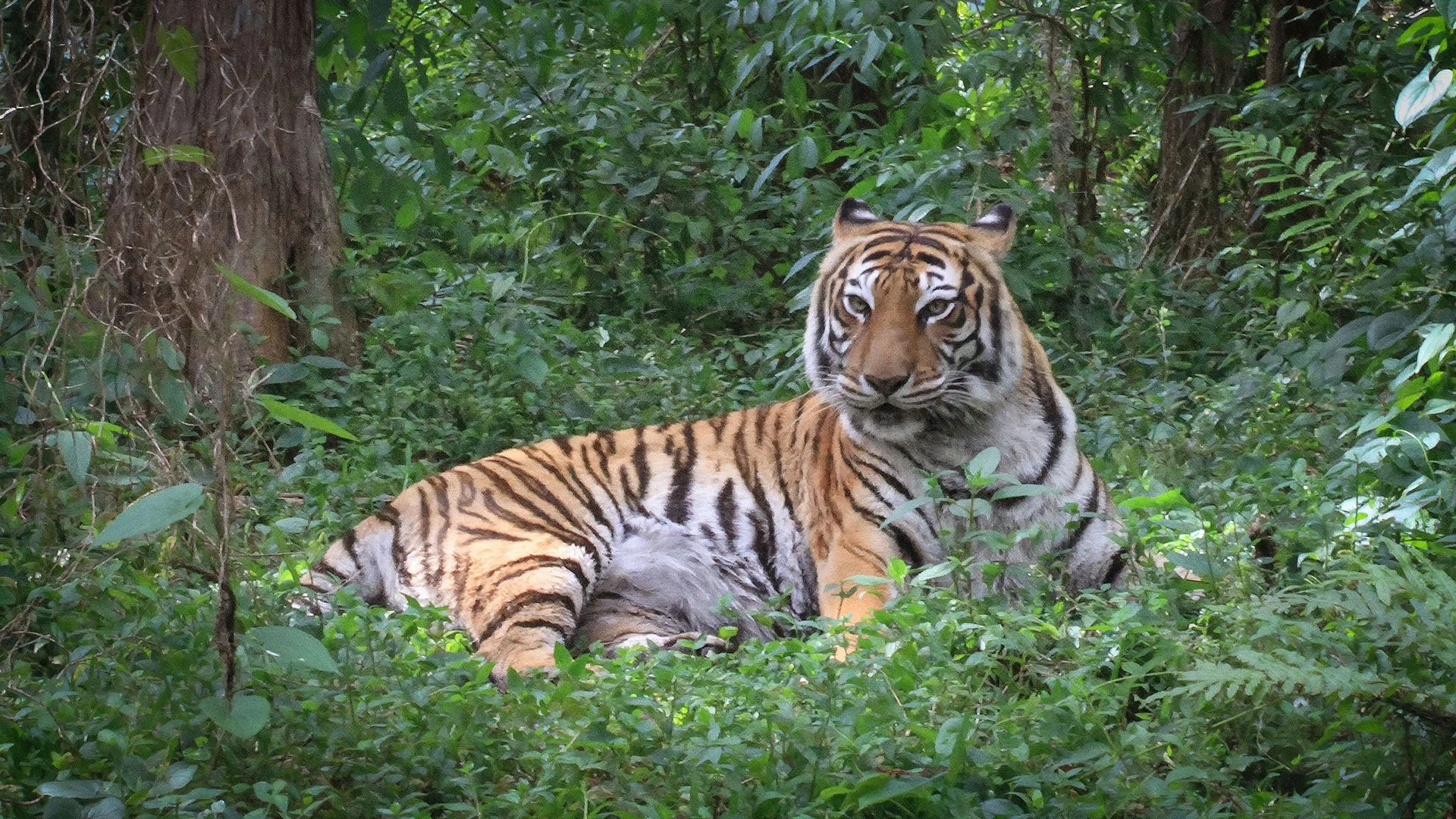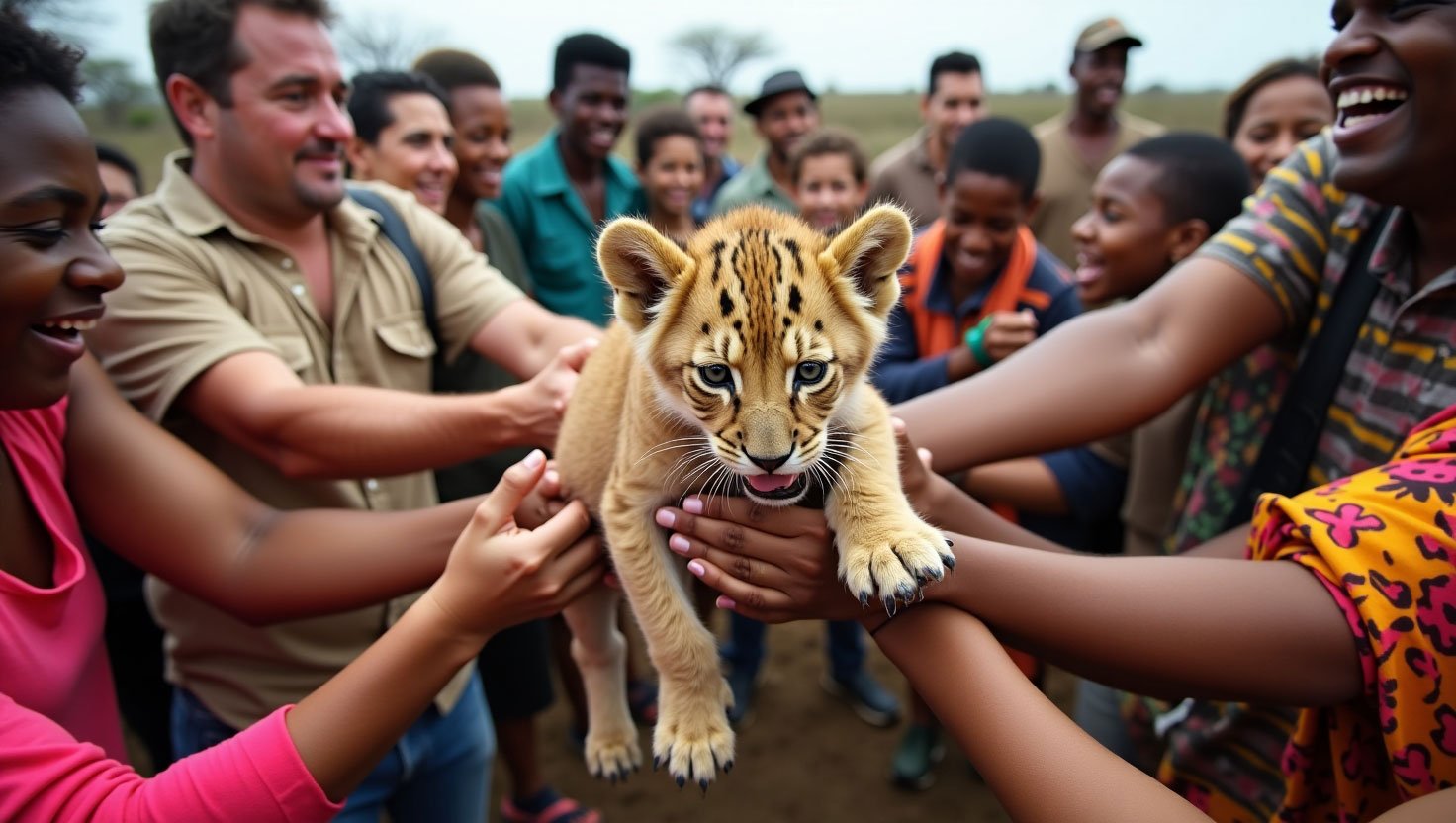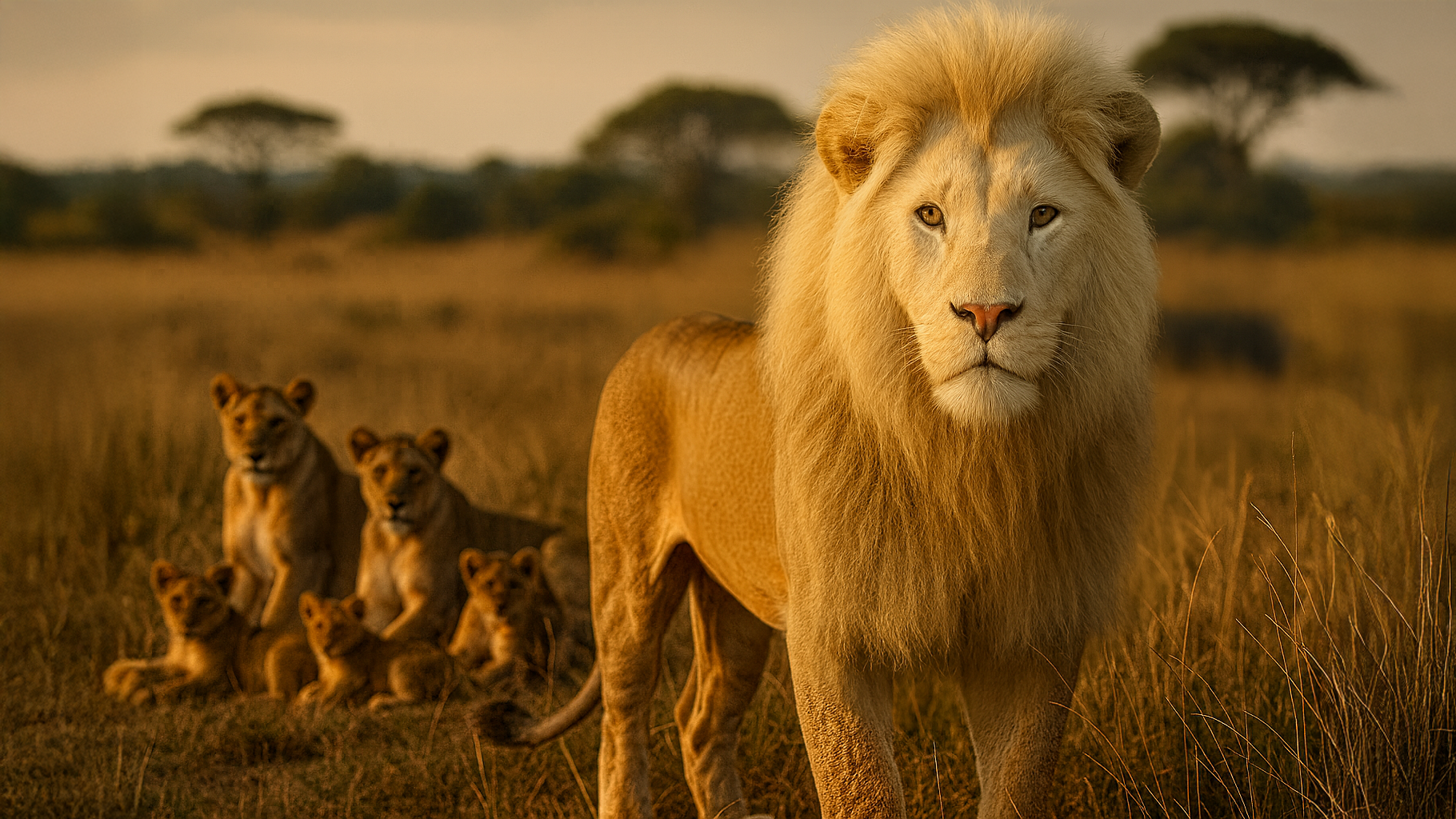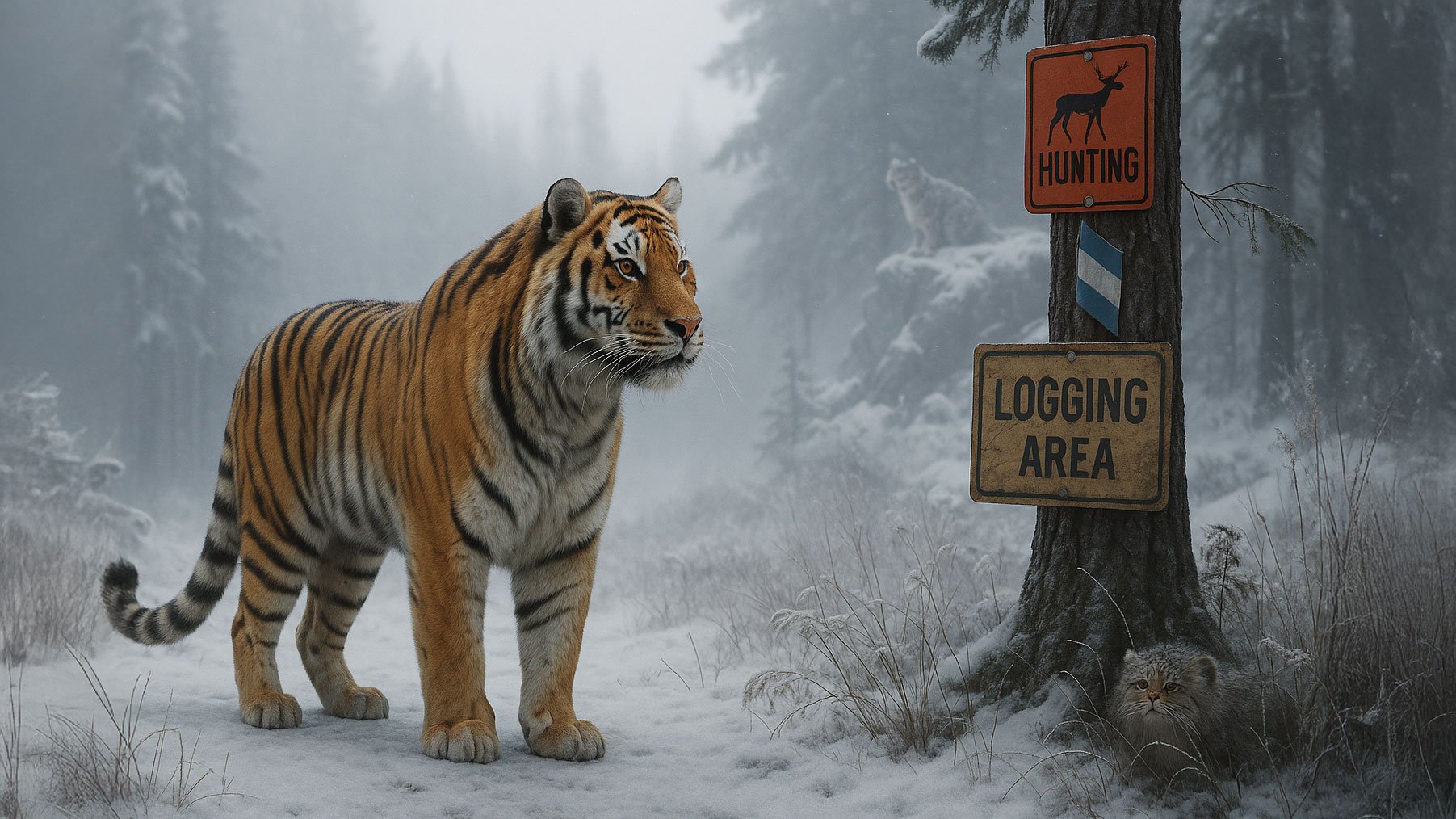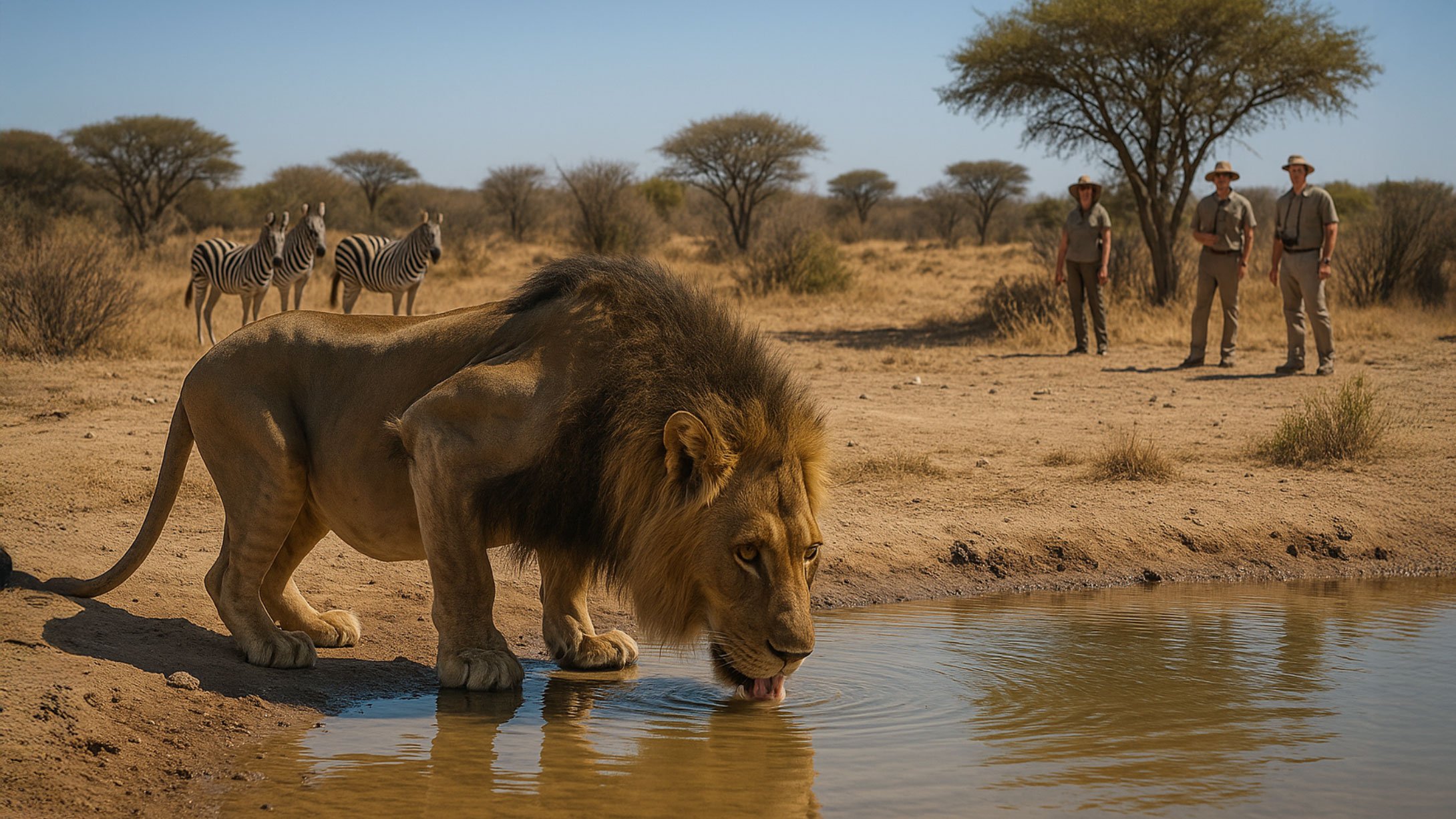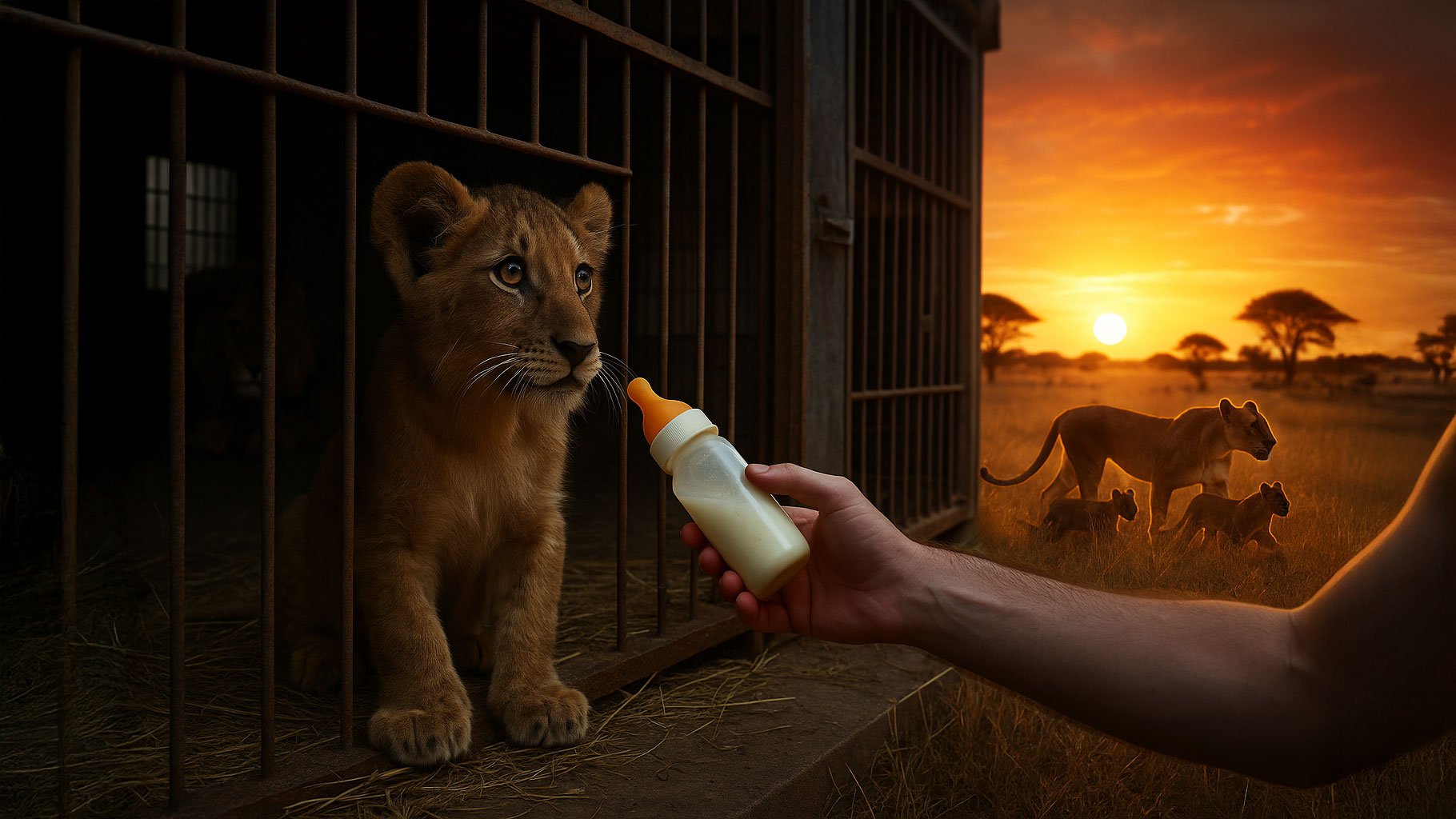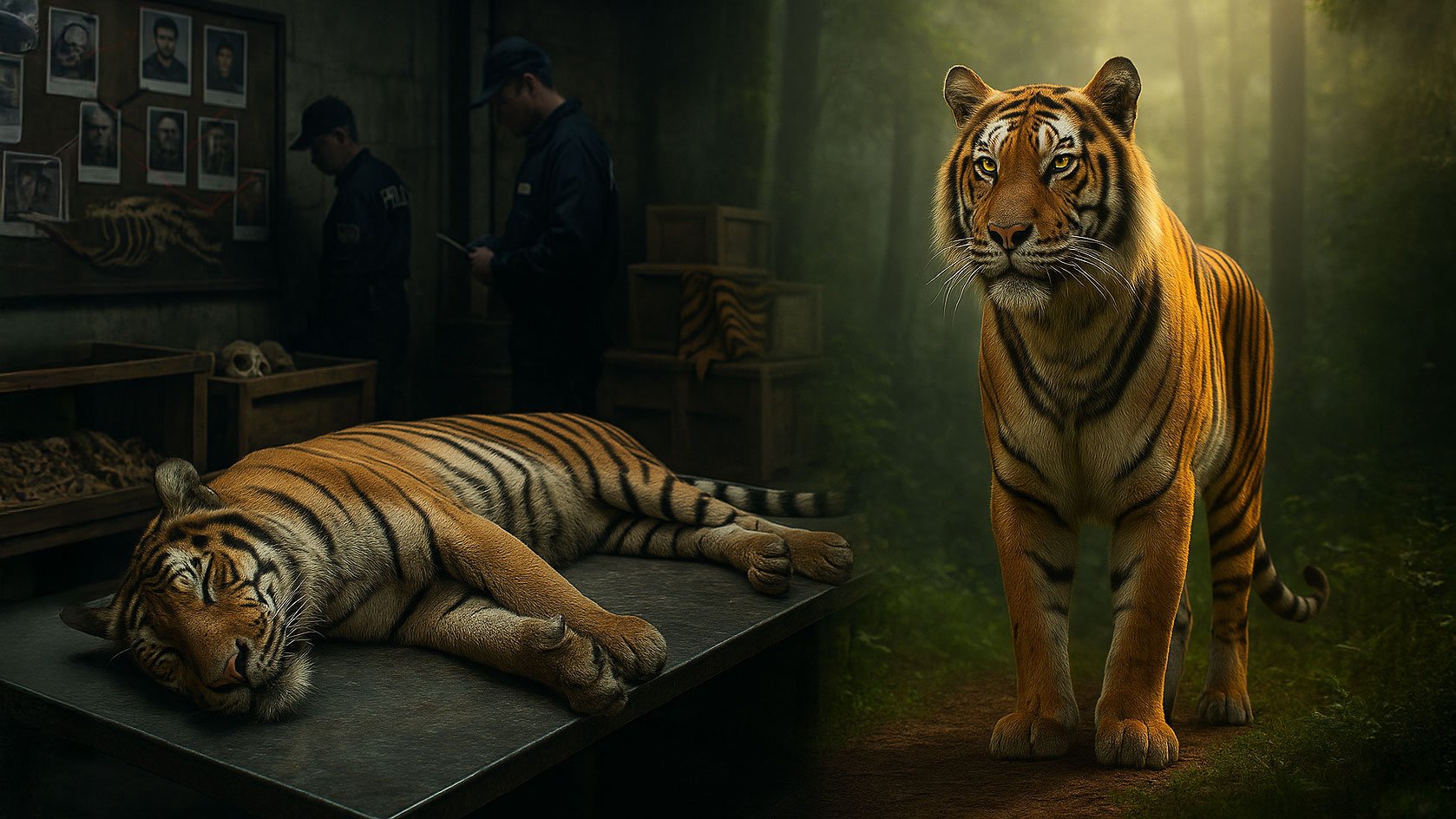CITES Report 2025
For millennia, wild cats have captured the human imagination. From the reverence of ancient Egyptians who worshipped feline deities to the modern fascination with tigers and leopards, these magnificent predators have woven themselves into the fabric of human culture. Yet today, this ancient relationship faces unprecedented challenges as wild cat populations dwindle across the globe, while millions of people whose lives are intertwined with these species struggle to survive in an increasingly complex world.
The roar of a lion echoing across the African savanna, the silent prowl of a snow leopard through Himalayan peaks, the spotted coat of a jaguar disappearing into Amazonian shadows—these images represent not just the raw beauty of nature, but the intricate web of relationships between wild cats and the indigenous peoples and local communities who have coexisted with them for generations.
CITES: A Global Shield for Wild Cats
The Convention on International Trade in Endangered Species of Wild Fauna and Flora (CITES) stands as the world's principal mechanism for ensuring sustainability in international wildlife trade. Since coming into force on July 1, 1975, this landmark agreement has grown to protect over 39,000 animal and plant species, with wild cats occupying a prominent place among its most critically protected species.
CITES currently protects over 39,000 animal and plant species through regulated international trade, with 185 member countries committed to implementation.
Wild cat species are distributed across CITES' three appendices based on their conservation status. Appendix I includes the most endangered species like tigers, snow leopards, and cheetahs, where trade is permitted only in exceptional circumstances. Appendix II covers species like African lions and leopards, where trade must be carefully controlled to prevent future endangerment. This tiered system recognizes that different species face different levels of threat while acknowledging the complex realities of human-wildlife interactions.
The CITES framework operates through a sophisticated licensing system requiring non-detriment findings (NDFs) and legal acquisition findings for all exports. For wild cats, this means that any international trade must be scientifically proven to be sustainable and legally obtained—a crucial protection against the devastating illegal wildlife trade that has decimated populations of tigers, leopards, and other species.
Indigenous Peoples and Local Communities: The Guardians of Wild Cat Habitats
The story of wild cat conservation cannot be told without recognizing the indigenous peoples and local communities (IPLCs) who have served as guardians of these species for centuries. From the Maasai communities living alongside lions in Kenya and Tanzania to the indigenous groups protecting jaguar corridors in Central and South America, these communities possess invaluable traditional knowledge about wild cat behavior, ecology, and sustainable management practices.
"Local communities must be involved in the development and implementation of management plans for CITES-listed species to effectively incorporate their concerns and priorities and avoid habitat destruction." - CITES Guidance Document
In the context of CITES, indigenous peoples and local communities are understood to include rural communities whose livelihoods are directly connected to wildlife and natural resources. These communities often live in the front lines of conservation, where the presence of wild cats can mean both opportunity and challenge. A Kenyan pastoralist may lose livestock to a leopard attack, while a Namibian conservancy member may benefit from leopard-watching tourism revenue.
The relationship between IPLCs and wild cats is multifaceted and deeply rooted in cultural traditions. Many indigenous cultures view wild cats as spiritual beings, totems, or important elements of their cosmology. The Kayapó people of Brazil consider the jaguar a sacred animal essential to their worldview, while various African cultures have long-standing traditions of living in harmony with lions and leopards through traditional governance systems and taboos that protect these species.
The Economics of Coexistence: How Wild Cat Trade Affects Human Livelihoods
The regulated trade in wild cat products and the broader conservation economy around these species plays a significant role in the livelihoods of millions of people worldwide. This economic relationship is complex, encompassing both the benefits of sustainable use and the costs of human-wildlife conflict.
Employment and Capacity Building
The conservation economy around wild cats creates employment opportunities that extend far beyond direct wildlife management. Eco-tourism focused on big cats employs thousands of people as guides, trackers, lodge staff, and in supporting industries. Wildlife monitoring and research programs provide jobs for local people as community scouts, data collectors, and conservation technicians.
Photography tourism, particularly for iconic species like tigers, leopards, and lions, has become a significant economic driver in many countries. In India, tiger tourism generates millions of dollars annually, supporting local communities around national parks and tiger reserves. This creates powerful economic incentives for wild cat protection while providing sustainable livelihoods for local people.
Balancing Conservation with Community Needs
The challenge of wild cat conservation lies in finding the delicate balance between protecting these magnificent predators and meeting the legitimate needs of human communities. CITES has increasingly recognized this balance through its growing focus on livelihood impacts and community engagement in conservation decisions.
Addressing Human-Wildlife Conflict
Human-wildlife conflict represents one of the most significant challenges in wild cat conservation. When a tiger kills livestock in India, a lion attacks cattle in Kenya, or a jaguar threatens community safety in Brazil, the immediate response often involves retaliatory killing. However, innovative approaches are emerging that address both human safety and wild cat conservation.
Compensation schemes, predator-proof livestock enclosures, early warning systems, and community-based conflict resolution mechanisms are being implemented across wild cat ranges. In Namibia, revenue from wildlife conservation is specifically used to offset costs caused by human-wildlife conflict, transforming these cats from liabilities into assets for communities.
Participatory Conservation Approaches
CITES has evolved to recognize that effective wild cat conservation requires meaningful participation of indigenous peoples and local communities in decision-making processes. The six key strategies outlined in CITES guidance for maximizing benefits from wildlife trade include ensuring domestic policy environments that confer rights to communities, building local capacity to understand CITES operations, and creating viable business opportunities for communities.
Countries like Kenya demonstrate this participatory approach by involving indigenous peoples and local communities in stakeholder consultations for CITES proposals and funding community representatives to attend CITES meetings as observers. This ensures that community voices are heard in international forums where decisions about wild cat protection are made.
Success Stories: Communities Leading Wild Cat Conservation
Across the world, inspiring examples demonstrate how communities can lead successful wild cat conservation while improving their own livelihoods and well-being.
The Namibian Model
Namibia's conservancy system empowers indigenous peoples and local communities with self-governing structures where they have voting powers and hold annual general meetings to elect their committees. During the COVID-19 pandemic, these community platforms proved to be critical lifelines, enabling partners to voice concerns and ensuring communities felt heard by relevant stakeholders.
Cameroon's Revenue Sharing
In Cameroon, proceeds from trade in CITES-listed species are systematically reinvested in conservation projects and community development. The law mandates a distribution where 50% goes to the state, 40% to local municipalities, and 10% directly to neighboring communities. This creates direct financial incentives for communities to support wild cat conservation rather than participate in illegal hunting or habitat destruction.
Kenya's Inclusive Approach
Kenya involves indigenous peoples and local communities in developing CITES proposals and country positions for international meetings. Community representatives are nominated and funded to attend CITES meetings as observers, ensuring that local perspectives inform global decisions about species like leopards and lions that directly impact community livelihoods.
The Path Forward: Challenges and Opportunities
Despite significant progress, challenges remain in achieving the optimal balance between wild cat conservation and human welfare. Climate change is altering wild cat habitats and prey availability, forcing these predators into closer contact with human communities. Growing human populations increase pressure on wild spaces, while economic development often comes at the cost of wildlife habitat.
However, opportunities for positive change continue to emerge. Advances in technology enable better monitoring of wild cat populations and more effective anti-poaching efforts. Growing global awareness of the importance of biodiversity creates new funding opportunities for community-based conservation. The increasing recognition within CITES of the importance of indigenous peoples and local communities creates space for more inclusive and effective conservation approaches.
Building Capacity and Partnerships
The future of wild cat conservation depends on building the capacity of local communities to participate effectively in conservation and benefit from sustainable wildlife management. This includes providing training on CITES regulations, supporting the development of community-based enterprises, and ensuring that conservation benefits reach the people who bear the costs of living alongside wild predators.
Partnerships between international conservation organizations, governments, and local communities are essential for scaling up successful models. The Community-Based Natural Resource Management programs in southern Africa, community conservancies in Kenya, and indigenous territory conservation initiatives in Latin America provide blueprints that can be adapted to different cultural and ecological contexts.
The future of wild cats and the communities that share their landscapes depends on our collective commitment to finding solutions that work for both people and wildlife. Every action we take today determines whether future generations will inherit a world where wild cats roam free and human communities thrive alongside them.
A Call to Action: Supporting Both Cats and Communities
The story of wild cats and humanity is still being written, and each of us has a role to play in ensuring it has a positive ending. The CITES framework provides the legal and institutional foundation for sustainable wild cat conservation, but its success depends on our collective commitment to supporting both species protection and human welfare.
We must advocate for conservation approaches that recognize indigenous peoples and local communities as partners rather than obstacles in wild cat protection. This means supporting community-based conservation initiatives, ensuring that local voices are heard in conservation decision-making, and creating economic opportunities that make wild cat conservation profitable for the people who live alongside these magnificent predators.
As consumers, we can support sustainable and ethical wildlife tourism that benefits local communities and wild cat conservation. As voters and citizens, we can advocate for policies that fund community-based conservation and ensure that indigenous rights are respected in conservation planning. As individuals, we can support organizations that work directly with local communities to protect wild cats and their habitats.
The roar of a wild cat in its natural habitat is one of nature's most powerful sounds—a reminder of the wildness that still exists in our world and the responsibility we all share to protect it. But behind every wild cat's roar is a human story: of communities that have coexisted with these predators for generations, of people who depend on healthy ecosystems for their survival, and of individuals who have chosen to dedicate their lives to conservation despite the challenges they face.
The future of wild cats and the future of the communities that share their world are inextricably linked. By supporting approaches that benefit both, we can ensure that the ancient relationship between humans and wild cats continues to evolve in positive ways, creating a world where magnificent predators roam free and human communities prosper alongside them.
In this shared journey toward coexistence, every voice matters, every action counts, and every choice we make today shapes the world we leave for tomorrow. The wild cats are calling—and it's time for humanity to answer with wisdom, compassion, and commitment to a future where all life can thrive.
